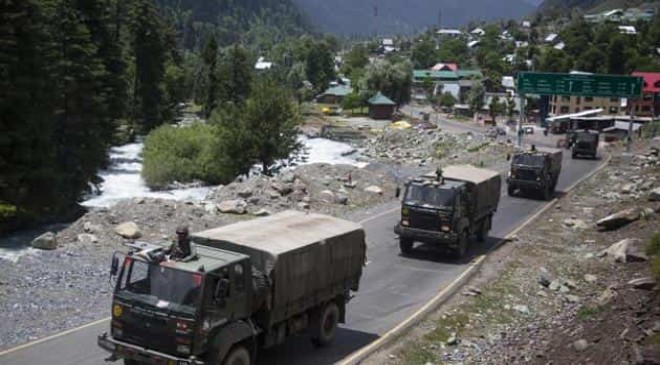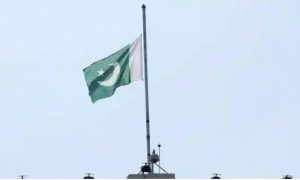BEIJING: China on Friday blamed India for the ongoing military tension along the Line of Actual Control (LAC) in eastern Ladakh, saying the Indian side had trespassed across the disputed boundary in 2020 but added that the latest round of disengagement from Patrol Point-15 (Gogra-Hotsprings) area is conducive for peace and tranquillity along the Sino-India border.
“China always conducts normal activities in line with agreements between the two countries. We also ask (the) Indian side to observe relevant agreements. The so-called status quo in April 2020 as you mentioned was created by illegal trespassing on the Indian side. China never accepts that,” Chinese foreign ministry spokesperson, Mao Ning said on Friday, responding to a question on the disengagement.
“China is committed to resolving disputes through diplomacy and discussion,” Mao added.
On the possible meeting between Prime Minister Narendra Modi and Chinese President Xi Jinping on the sidelines of the Shanghai Cooperation Organisation (SCO) – of which both are members – in Samarkand in Uzbekistan next week, she said: “I have no information to offer at this moment”.
Earlier on Friday, China confirmed that the disengagement process of frontline troops had begun from Patrol Point-15 (Gogra-Hotsprings) area in eastern Ladakh, in a brief defence ministry statement, released both in Chinese and English.
“On 8th September, 2022, according to the consensus reached in the 16th Round of China-India Corps Commander Level Meeting, the Chinese and Indian troops in the area of Jianan Daban have begun to disengage in a coordinated and planned way, which is conducive to the peace and tranquillity in the border areas,”.
The Chinese defence ministry’s statement on the disengagement linked it to the 16th round of military talks conducted at the level of the India-China Corp Commanders, which was held in July at the Chushul-Moldo border meeting point on the Indian side.
The “Jianan Daban” area mentioned in the Chinese statement is the same as PP-15 or Gogra-Hotsprings, mentioned in the Indian official statement on disengagement released Thursday evening.
Asked to comment further on the disengagement process at the Chinese foreign ministry briefing, spokesperson, Mao said: “This is (the) outcome of multiple rounds of talks in a period of time between the two sides’ military and diplomatic establishments at various levels, and is conducive to peace and stability.”
“(The) two sides conducted frank and intense exchange of views and both sides agreed to resolve and discuss settlement of relevant issues along the LAC in the western section of the China India border,” Mao said.
The spokesperson repeated Beijing’s stand on the “status quo”.
“We do not accept the [April 2020] status quo. This doesn’t mean we do not value the peace and stability there. I should say both sides have always been in contact on this issue,” she said.
Commenting that it wasn’t the first time China had stated its position on the issue, Mao said China and India have different views on the boundary question. “What matters most at this moment is we have communications through diplomatic channels, to start with disengagement and (to) do what we should do on both sides to ensure peace and stability in border areas,” she said.
China’s stand on territorial sovereignty remains firm and unchanged, she said. “China is committed to resolving disputes through diplomacy and discussion.
“This is why we have kept communication with the Indian side through diplomatic and military channels. The disengagement of both sides is a positive signal and we hope to see more sound development of China-India relations,” Mao said.
Interestingly, China had said in March, for the first time in an exclusive statement to HT, that soldiers of the People’s Liberation Army (PLA) had disengaged in the Hot Spring area, a claim which had been questioned by the Indian side.
The Chinese foreign ministry told HT that China is working closely with India to reach an acceptable solution to the standoff in eastern Ladakh “as soon as possible”, and claimed that troop disengagement has taken place at Galwan Valley, Pangong Lake and Hot Spring.
Not all areas of contention at Hot Spring had been cleared, people familiar with the matter had then said in New Delhi, without going into details. They had said the last round of disengagement was done by pulling back frontline troops from Gogra or patrolling point 17A during August 4-5, 2021.
Until the statement in March, China had only officially acknowledged the withdrawal of troops from the Pangong Lake area in February 2021 and from Galwan Valley the year before.
The Chinese government and PLA remained silent when India announced the disengagement of troops at Gogra in August 2021.
New Delhi has made it repeatedly clear to Beijing that complete disengagement and de-escalation at all friction points on the LAC are essential for bilateral ties to get back on track.
China has argued the boundary dispute should not define the entire bilateral relationship and the two countries should move forward on issues such as trade, a bilateral policy track that has been rejected by the Indian government.





































